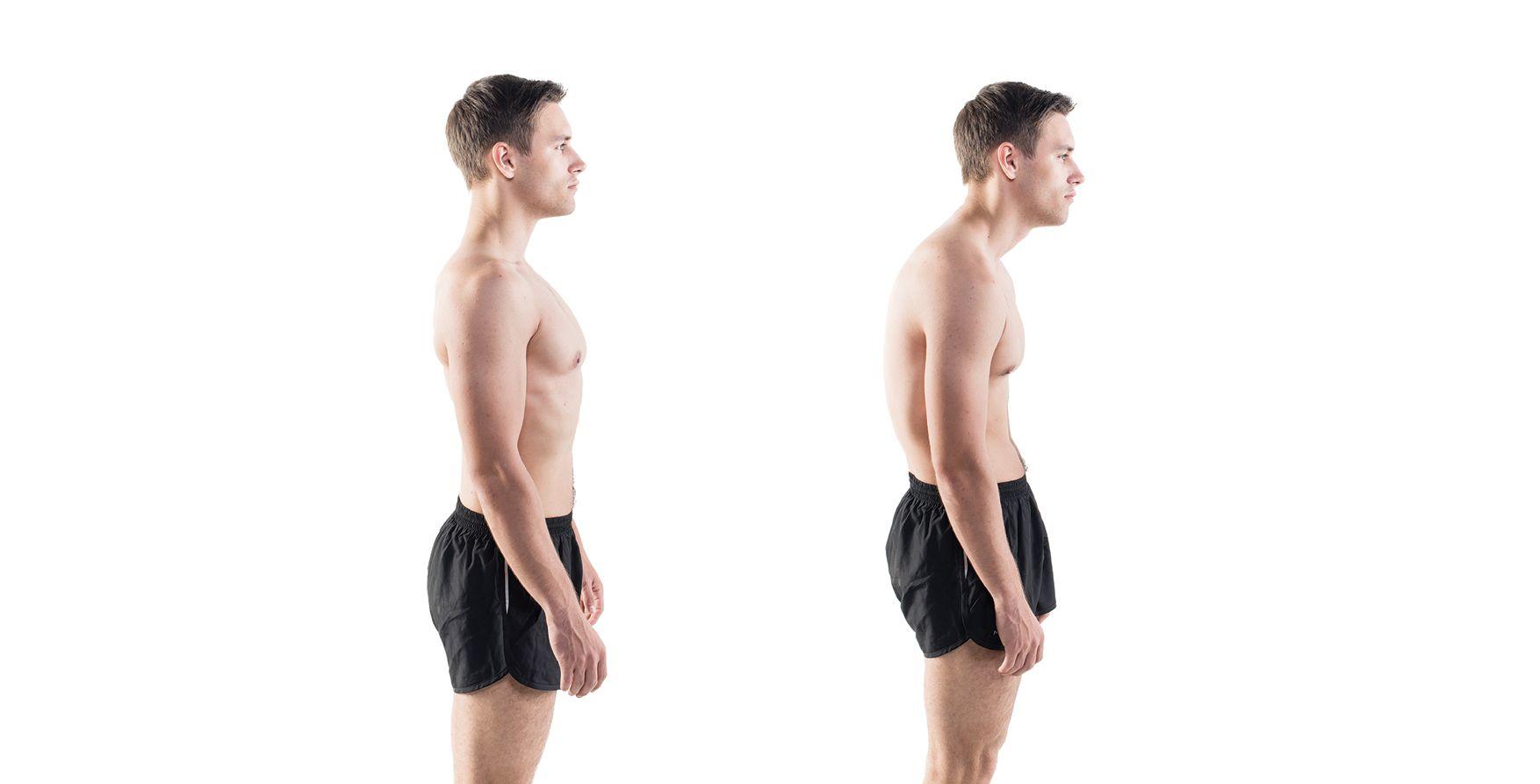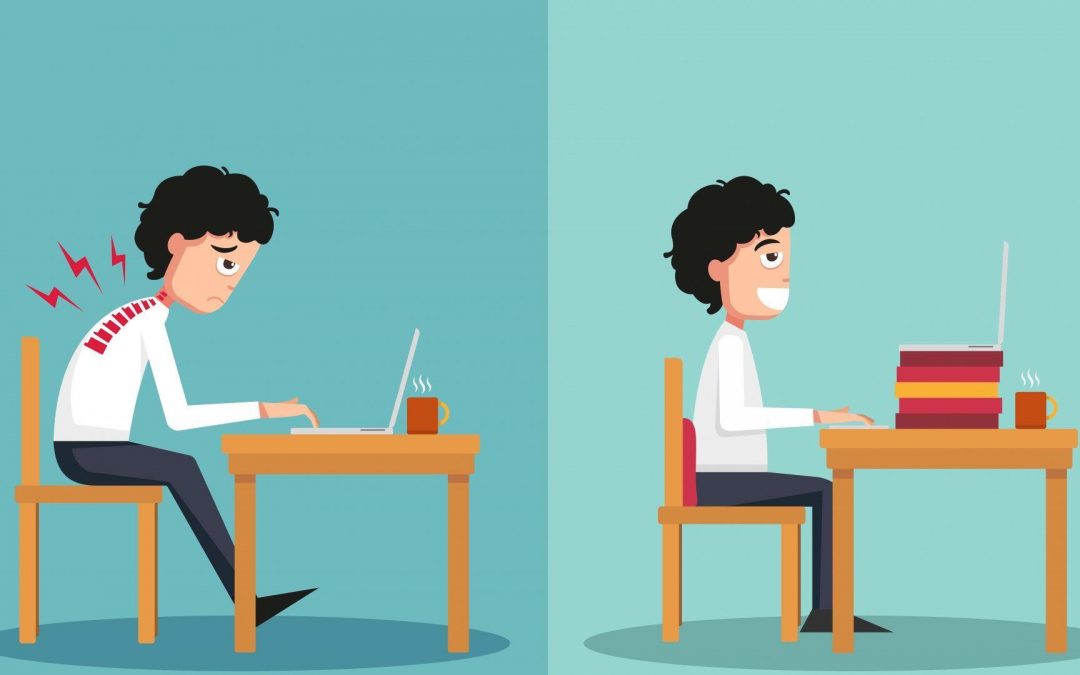 “Sit up straight! Don’t slouch!” That’s what many teenagers hear on a daily basis and how we hold ourselves, our posture, is a very important part of how people perceive us. Posture betrays emotions and moods and can even be used to tell if you’re lying or not and makes up a big part of that first impression at a job interview or on a first date.
“Sit up straight! Don’t slouch!” That’s what many teenagers hear on a daily basis and how we hold ourselves, our posture, is a very important part of how people perceive us. Posture betrays emotions and moods and can even be used to tell if you’re lying or not and makes up a big part of that first impression at a job interview or on a first date.
“The more mechanically distorted a person is, the less energy is available for healing, metabolism, and thought.“– Roger Sperry, Ph.D. (Noble Prize in Physiology 1981)
So, what’s new?
You’re probably also aware of how poor posture can lead to stiffness and pain as well as increase the likelihood of injuries. Sometimes just watching someone sitting badly can be uncomfortable.
There are two things I’m willing to bet you don’t know about posture.
1. Posture = Health – many of us don’t realise that posture is also an indication of your overall level of health. Your posture has profound effects on your heart, lungs, brain function, immune system and even your digestive system.
2. Posture is not about how you hold yourself up with your muscles, it’s about how your body holds itself up when well aligned.
Posture = Health
Lets dip into the first point a little more. Reading the quote at the beginning of the article gives a little clue as to how import posture is. Being “mechanically distorted” as Roger Sperry PhD, Nobel Prize winner said, means your body is not working efficiently.

In very simple terms (and I’m almost oversimplifying here), if you are spending more energy holding your body upright then there is less energy to devote to other things like “healing, metabolism and thought.” Those sound like pretty important things to me.
The more complex truth here is that movement is like a nutrient for your brain, enriching it, allowing it to function at it’s optimum level. A lack of movement is like having a lack of Vitamin C, but instead of causing scurvy it starves your brain and nervous system then influences mood, immune system, learning, movement and much, much more.
As your posture gets worse and slumps you literally stretch your spinal cord and nerves, something they don’t respond well to. Putting this chronic stretch on your nerves for even short periods can cause them to misfire. Bear in mind that your nerves control and co-ordinate every function in your body from how your heart beats to how your hands sense touch, from how you digest your food to how you move your muscles.
Fraying of wires is a very good way to think of what happens to your nerves when they are chronically stretched. In research on animals we know that when you create a slump, the nerves undergo demyelination which is the same as stripping the insulation off an electrical wire.
“Postural distortion is the beginning of the disease process.” – Hans Selye
Most of the time this nerve damage happens without you feeling anything. It sounds odd, but most of the nerves in your body control things other than pain. In fact only about 10% of the nerves in your body are devoted to feeling things like pain, the other 90% are devoted to controlling things like heart, lungs, digestion, immunity, balance and a lot more. So just because you can’t feel it doesn’t mean nerve damage isn’t there.
When we research posture and health we get some very telling results:
“Posture affects and moderates every physiologic function from breathing to hormonal production. Spinal pain, headache, mood, blood pressure, pulse and lung capacity are among the functions most easily influenced by posture.” – American Journal of Pain Management 1994, 4:36-39.
In a 2004 study in the Journal of the American Geriatrics Society, they found that people with worse posture died earlier than those with better posture.
Posture and pain
So we can see that a little slump is a big deal, even if it doesn’t cause any pain, but what about if you do have pain? If that is the case then we know that posture is going to be a significant factor.
“Forward Head Posture leads to long term muscle strain, disc herniations, arthritis, and pinched nerves.” – Mayo Clinic, November 3, 2000.
Posture and mood
Research also links posture to mood. The more your body slumps when you relax the more your outlook and self-esteem slumps too.
“Adopting an upright seated posture in the face of stress can maintain self-esteem, reduce negative mood, and increase positive mood compared to a slumped posture.” Health Psychology 2015
By now it’s becoming clear that posture is very important if you want be able to express good health and prevent or treat pain. So now what do you do?
You need help
Enter point number two that you’re probably not aware of: Posture has very little to do with consciously holding yourself up straight. In fact posture is mostly an unconscious function and when your spine is well aligned then your body can hold itself up without conscious muscular support.
This is how it works – When we get areas in the spine that become stuck or misaligned in a direction that your body can’t correct, your body is forced to compensate by slumping forward. It’s a little like limping if you sprain your ankle, you limp to put less stress on the injured ankle and you slump to put less stress on the stuck area.
Now if that only happened once of twice then it would’t be a significant problem, but we accumulate layers of misalignment and compensation from a very young age. As these layer pile up most of us get more and more slumped forward.
Some people however, respond in a slightly different way, they don’t slump forward but their spine and nerves still get damaged as their body compensates by making their spine straighter when it’s supposed to be nicely curved. Dancers are a good example of this phenomenon, they look like they have good posture from the outside but when we take X-rays of their spines they show us the same misalignment – compensation pattern, just in a slightly different pattern.
Once you have a misalignment in a direction that your body can’t self-correct, then you need someone else to help you to correct it. Your body has to adapt to it because it can’t self correct it and no special type of exercise or stretching is going to be able to help. You need to see a professional who is trained at detecting, analysing and correcting these misalignments.
What can you do?
What causes these misalignments (or subluxations as they are known to experienced Chiropractors)?
Well, physical trauma like accident and injuries can cause them as well as repetitive injury like sitting for long hours or carrying heavy bags.
Chemical factors contribute to them too. Did you know that people who smoke and have poor diets often show greater amounts of decay in their spine than those who don’t?
Mental and emotional factors also form part of the picture. What kind of posture does an unhappy person have?

Ok, the idea that posture is important for health is becoming clear and so is the fact that waiting for pain to hit is probably a bad idea. You’re also now aware that this is about more than using muscles to sit up straight and not slouch. So what to do?
Just like you can’t feel your blood pressure and you have to get it checked to know if it’s high or not, so you have to have your posture checked to know if it’s good or not.
Chiropractors are the experts at assessing your posture, especially those that can can measure it with some form of technology rather than just eyeball it. Alignment of your ear to your shoulder, how level your head, shoulders and hips are and leg length differences are some of the ways that posture can be measured.
At Peak Chiropractic Centre we take things a step further and do a digital posture assessment and give you a “Posture Number” that we can measure. We are then able tell you how good or bad your posture is and track it as we use Advanced Biostructural Correction™ to improve it.
In 2020 we updated our diagnostic tool kit with our own in-house digital X-ray facilities.
Peak Chiropractic Centre located in Claremont are family-friendly chiropractors focused on relieving aches, pains and posture correction. We offer in-house X-Ray facilities.

